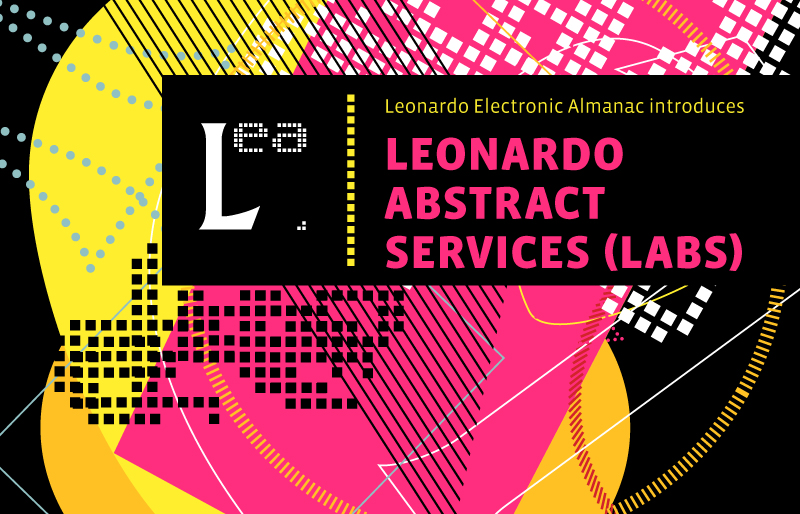
Leonardo Abstract Services (LABS) 2008-2009
Transparency, Cognition and Interactivity: Toward a New Aesthetic for Media Art
This practice-based thesis undertakes research into the contemporary aesthetic of interactive media art, in order to propose a useful practical model of interactivity founded on a critical approach to both existing theory and practice. It proceeds from the identification of a primary lack in contemporary aesthetics that arises from the predominantly materialistic comprehension of technologically-mediated artworks. The thesis establishes a new model for interactive art that offers an immaterial engagement with technology at a locus where cognition and the aesthetic intertwine. This model is constructed following a revision of both the theory and practice of interactive media art, which identifies a materialistic bias of technology-mediated art production caused by a confused concept of technology as both tool and medium. This investigation confines itself to the last forty years of interactive art and the new model of spectatorship that has accompanied it. The main objective of what follows from this investigation is an account of agency in the artist and spectator interrelationship. In the context of technologically based artworks various approaches to spectatorship have frequently remained within the constraints of the traditional model of art that inherently drew on a separation between body and mind. It is argued in this thesis that neither the technology nor the participation itself, but the cognitive interconnection between ‘artist-artwork-spectator’ produces the primary aesthetic dimension of interactive media art. In this respect, not the physical object creation but the aestheticisation of this triangle produces the here identified immaterial/cognitive experience of the spectators. This can be achieved when the technology is applied as a transparent medium — one of the core concepts introduced in this thesis — which can facilitate an aesthetic quality or meaning creation through technology. The ‘transparent medium’ enables the cognitive-based experience production, which is identified as the immersive flow of the spectator’s aesthetic experience. As such, the re-evaluation of the artist- spectator interrelationship proposes a new immaterial model of art which is called the Transparent Act. The introduction of the Transparent Act leads to the main intervention of this thesis which lies in an effort to recover a lost dimension in interactive media art. A recovery of this dimension enables access to a knowledge practice which is not necessarily located in ordinary cognitive experiences but in unfamiliar conscious states that can be compared to accounts of so-called spiritual experiences. The model of the Transparent Act is concurrently applied as a practise-based intervention and proof-of-concept in a major installation, the Mind Cupola. This artistic and technological contextualisation of the original intervention of this thesis is exemplified as an affective environment which aims for an immediate cognitive affection of the spectator by generating mechanical and audio-visual effects in the spectator’s ‘mind’. The artistic system uses special face analysis techniques to close the feedback loop and affect the spectator through the analysis of her/his reactions. The installation is built upon a ‘passive’ modality of interaction in which the spectator contributes to the artwork with subtle, cognitive-based interactions which are fed back through a complex open response system. The implementation of cognitive feedback loops, also described as the fractal structure in the spectator’s cognition, constitutes the essential transparent medium through which the previously lost immaterial dimension of a spiritual-like aesthetic experience in interactive media art is achieved. The thesis concludes with suggestions of further applications including the evaluation of technologically mediated artworks.
Degree: PhD
Year: 2008
Pages: 300
University: University of Wales
Supervisor: Dr. Martha Blassnigg
Email: martha.blassnigg@gmail.com
Supervisor 2: Dr. Phil Culverhouse, Prof. Michael Punt
Language: English
Dept: Art & Technology
Copyright: Brigitta Zics
Lang_author: English, Hungarian, German
Email: brigittaopal@gmail.com
Keywords: interactive media art, cognition, consciousness, interactivity, technology, transparency, invisibility, immateriality, spectatorship, aesthetics, immersion, transparent medium, passive interaction, Transparent Act, Mind Cupola, affective environment, cognitive feedback loop, fractal structure, spiritual-like experience
LEONARDO ABSTRACTS SERVICE (LABS) is a comprehensive collection of Ph.D., Masters and MFA thesis abstracts on topics in the emerging intersection between art, science and technology.
If you are interested you can submit your abstract to the English LABS, Spanish LABS, Chinese LABS and French LABS international Peer Review Panels for inclusion in their respective databases. The authors of abstracts most highly ranked by the panel will also be invited to submit an article for consideration for publication in the refereed journal Leonardo.
